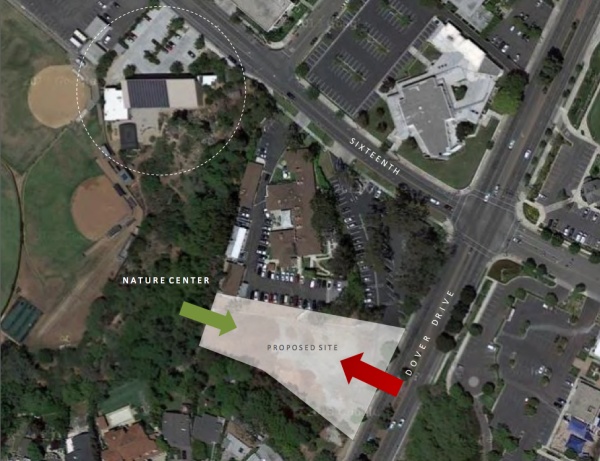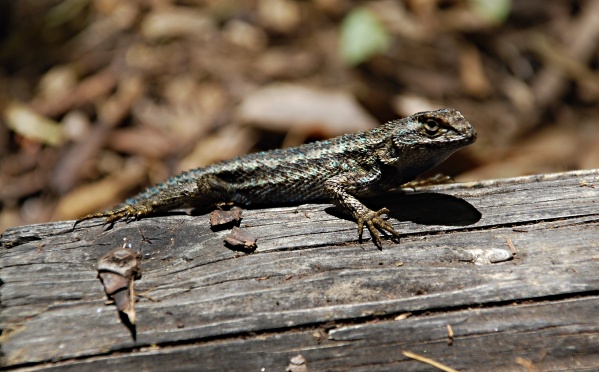Imagine a preschool where youngsters will learn their ABC’s and 123’s among the birds and the trees – that’s the theory behind the first ever pre-K program in Southern California to be established at a nature center.
The new pre-K facility will be housed at the Environmental Nature Center (ENC) in Newport Beach, a location already well-known to parents, school kids and nature lovers in Orange County. The ENC purchased 1½ acres of adjacent property in late 2012 specifically for the preschool and is now busy fundraising for facility construction and an endowment for scholarships.

For more than 40 years, the ENC has welcomed more than 21,000 students from kindergarten to high school for daily field trips and well-attended seasonal camp programs. School busses are regularly seen on the property as are groups of children who take turns peering into microscopes at picnic tables, examining snake skin with a magnifying glass and observing the differences and similarities of preserved butterflies, moths and beetles.

Extending that experience to an even younger crowd has been an idea kicked around by ENC staff at for years. While the concept is new for the West Coast, preschools at nature centers are more common in the Midwest and East Coast including popular and long lasting ones in Milwaukee, Kalamazoo and Hanover.
“Having a dedicated site for a preschool really can instill positive life-long experience of the outdoors for not only the children but their families as well,” says ENC Executive Director Bo Glover who has visited many of those schools and saw their programs in action. “It’s all about early environmental awareness and appreciation.”
The prelim drawings of the preschool would feature three classrooms and admission building, all LEED Platinum certified for sustainability. Numerous play areas, gardens, sand pits and more will ensure that students will spend more of the day outdoors.

Ground hasn’t even been broken and already more than 300 families have expressed interest and want to be on a wait list for the preschool; a maximum of 72 youngsters will be in that first class. If all the stars align and funding and paperwork goes as hoped, the school could open its doors as early as January 2017.

The project got a big boost recently with an anonymous donation of $1 million; the donor also pledged to match any donations to the campaign up to $3 million. Currently the ENC is more than halfway in its $10 million campaign, a good sign that the community wants the preschool in its hood. Once that $3 million match is reached, building can begin and the hunt for a preschool director and staff can commence with an added intensity.
ENC Director Lori Whalen walks the empty 1½ acre lot that will be transformed into a haven amidst urban life is bordered by high fences from a hospital and private residence; busy Dover Street bustles with traffic on the east. But look west. Trees, vines and greenery of the nature center grounds give a hint to the future. “The start of every school day must be outside, no matter the weather because there is no bad weather, just bad clothing,” says Whalen as she points out monarch, mourning cloak and swallowtails that have fluttered nearby. Birds flutter and flap, sing and perch. One can imagine toddlers delighting in watching a scrub jay dart downward for a peanut or a finding a fence lizard doing its morning pushups.

Whalen and her colleagues have been eagerly devouring all materials and research related to early childhood development as it relates to nature and the outdoors. She rattles off the many reasons to introduce children to learning in a natural environment: youngsters grow up calmer, think deeper, have fewer instances of ADHD and are physically more healthy. “This way, they will see nature as familiar and not a foreign thing,” she adds. “There will be an immediate sense of comfort and connection in the outdoors. We want them to explore and yes, get dirty.”
In addition to spending time on the preschool grounds, students will take daily treks into ENC acres with naturalists offering wildlife insights. Maybe if they are lucky, groups will spy lizards, rabbits, tree squirrels, birds and other insect life. “We actually have seen slender salamanders here on the property,” says Whalen about the endangered amphibian. “That could be a real teachable moment if a group saw one.”
Indeed, coming face-to-face with nature and wild critters, the common and the not-so-common, is something every human being should experience regularly, no matter if they are 3- or 93-years-old. It’s an education at any age.
–– Story and photos by Brenda Rees, editor
